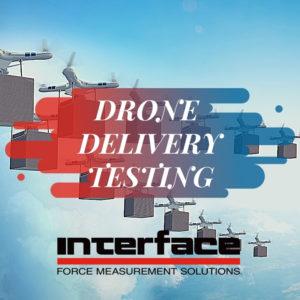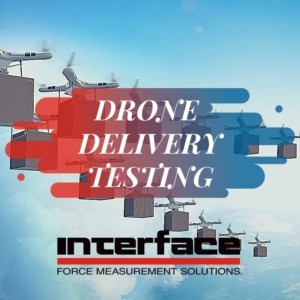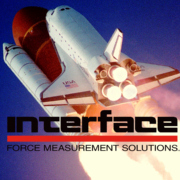Testing for Commercial Drones and Parcel Delivery
 Drone parcel delivery, and the use of drones in general, has expanded rapidly throughout the world. A technology that was once relegated to science fiction and imagination is becoming a real-world asset and making a huge impact on many commercial use applications in military and defense, consumer goods, logistics and inventory management, industrial automation, construction, security, agriculture, healthcare, imaging and surveying, as well as shipping and fulfillment.
Drone parcel delivery, and the use of drones in general, has expanded rapidly throughout the world. A technology that was once relegated to science fiction and imagination is becoming a real-world asset and making a huge impact on many commercial use applications in military and defense, consumer goods, logistics and inventory management, industrial automation, construction, security, agriculture, healthcare, imaging and surveying, as well as shipping and fulfillment.
To give you an idea of the impact of drones, take a look at recent numbers published by the FAA on registered drones in the U.S.:
- 1,710,159 Drones Registered
- 495,909 Commercial Drones Registered
- 1,210,751 Recreational Drones Registered
- 195,346 Remote Pilots Certified
There is a significant role for test and measurement as well as embedded sensors in this growing industry, which is expected to reach of $6B in size in the next few years. Load cells play a huge part in the design and development of this specialized aircraft technology and ongoing monitoring while in flight. Drones are classified as unmanned aerial vehicles. Basically, an aircraft without a human pilot. Successful operation of a UAV is dependent on a system, including the vehicle, a ground-based controller, and communications components, all of which must pass rigorous performance testing standards and constant data feedback.
The knowledge and tools we apply to test and measure airplanes and spacecraft performance can be transferred at a smaller scale to drones. Drone OEMs need to collect data points on thrust and velocity in test, and they also need to collect real-time sensor data on drones in-use. In fact, a large variety of sensor types are used for drone applications, including: force sensors, gyroscopes, barometers, and accelerometers.
Most recreational drones have passed significant testing during the engineering and design phase to ensure safety for anyone on the ground. Early applications and adoption sparked immediate regulation and safety requirements. We are now seeing the fastest expansion of this technology into commercial use. The future of drone technology for wide-scale business use has several of the world’s largest companies engaged in expansive development and deployment in use of UAVs for package delivery, including Alphabet (Google), Amazon, UPS, CVS and Walmart.
Commercial applications require substantially more rigorous testing in all use cases, in particular for transportation of objects. Most developed countries have defined commercial use requirements and regulations, such as the FAA in the U.S. Not only is the safety of those on the ground important critical, so is protecting the value of the goods in transport.
In demonstrating how force measurement solutions are used with drone technology, Interface created animated application note showcasing how a force solution is necessary for real-time monitoring of drones used in the shipping and fulfillment markets. Testing beyond flight, there is a level of complexity present when you introduce the weight of a package to a drone.
DRONE TESTING USE CASE
Customer Challenge:
A customer approached Interface to deliver a force solution capable of weighing a “payload” and using that data in real-time to tell the propeller motors to compensate for weight shifting or uneven weight distribution. The purpose of the force solution was to help the drone lift the payload and fly normally to reach its destination.
Interface Force Measurement Solution:
To solve this challenge, Interface supplied four WMC Sealed Stainless Steel Miniature Load Cells, which were used to measure the weight of the payload and detect weight shifting and distribution in flight. As shifting and uneven distribution occurred, the load cells send a signal to the necessary propeller motors to compensate.
How it Works:
The four miniature load cells are connected independently to each of the four landing gear legs. The load cells are then connected to the drone’s processor, which allows the load cell to communicate the weight of the payload and store the information. As the drone flies and weight shifts, the load cell can then relay the information to the processor in real-time so that the individual motors increase in RPM to balance the shifting weight.
Subscribe to Interface’s YouTube Channel to see our latest animated application notes. This new series of animated application notes give viewers a better sense of how force measurement products are applied to real-world challenges to collect and analyze data. So far, we have produced three animated application notes, which we have linked below:









